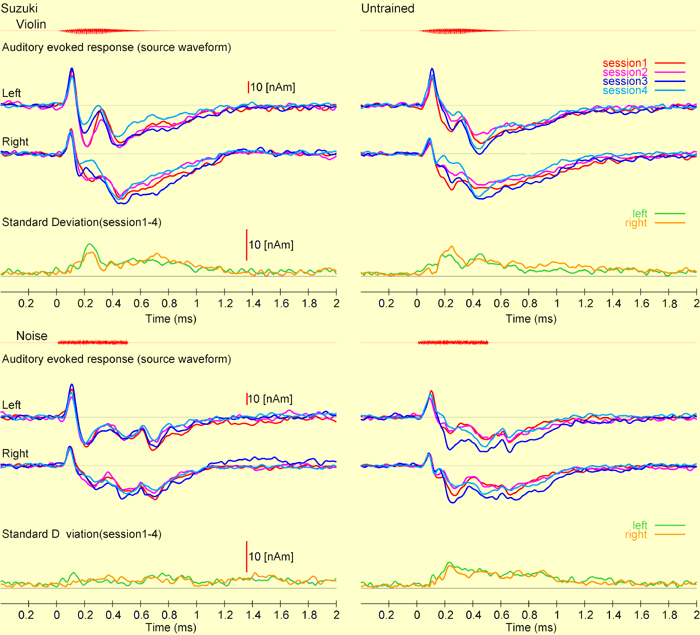Auditory evoked responses to a violin tone and a noise-burst stimulus were recorded from four to six year old children in four repeated measurements over a one-year period using magnetoencephalography (MEG). Half of the subjects participated in musical lessons throughout the year; the other half had no music lessons. Auditory evoked magnetic fields showed prominent bilateral P100m, N250m, P320m, and N450m peaks. Significant change in the peak latencies of all components except P100m was observed over time. Larger P100m and N450m amplitude as well as more rapid change of N250m amplitude and latency was associated to the violin rather than the noise stimuli. Larger P100m and P320m peak amplitude in the left hemisphere than in the right are consistent with left-lateralized cortical development in this age group. A clear musical training effect was expressed in a larger and earlier N250m peak in the left hemisphere in response to the violin sound in musically trained children compared to untrained children. This difference coincided with pronounced morphologic change in a time window between 100 and 400 ms, which was observed in musically trained children in response to violin stimuli only, whereas in untrained children a similar change was present regardless of stimulus type. This transition could be related to establishing a neural network associated with sound categorization and/or involuntary attention, which can be altered by music learning experience.
Fujioka T, Ross B, Kakigi R, Pantev C, Trainor LJ: One year of musical training affects development of auditory cortical evoked fields in young children. Brain. 2006;129(Pt 10):2593-2608.

Grand averaged source waveforms at each session with its standard deviation across all sessions in each hemisphere in response to violin and noise stimuli from (left) Suzuki-music-trained subjects and (right) non-musically trained subjects.
When comparing the waveform of standard deviation between 100 and 400ms after the stimulus-onset, the transition across MEG sessions over the one-year period is different between groups. For the musically trained children, this transition is only present in the responses for the violin tone but absent for the noise stimulus. However, this transition was general maturational change in untrained group because it was present regardless of stimuli.